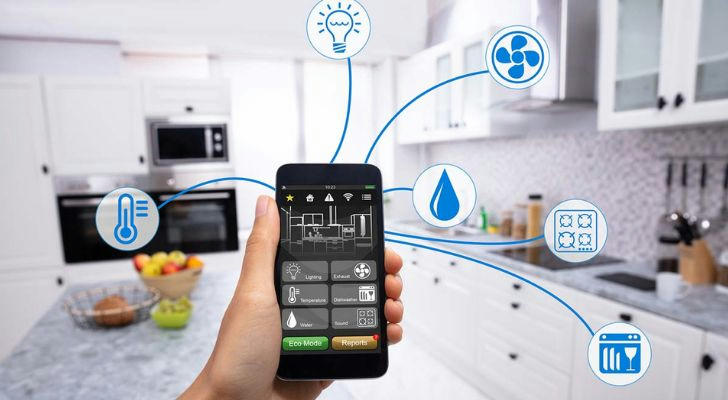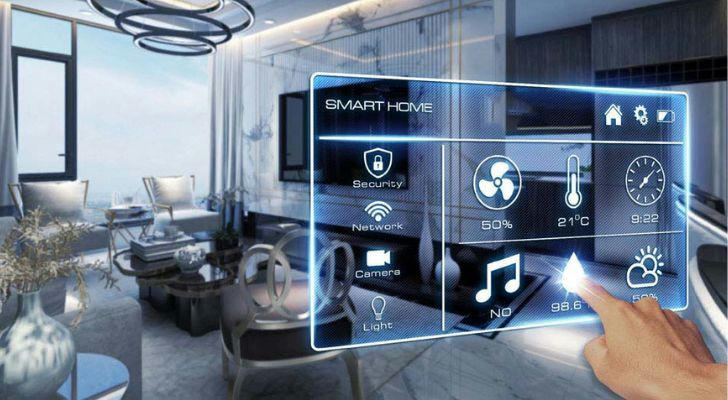Smart Home Automation Specialist Certification: A Comprehensive Guide for U.S. Professionals
The U.S. smart home market is projected to reach $53.5 billion by 2027 (Statista, 2023), driven by rising energy costs, aging-in-place needs, and consumer demand for integrated security solutions. This certification, endorsed by CEDIA (Custom Electronic Design & Installation Association) and aligned with NIST (National Institute of Standards and Technology) guidelines, equips professionals with the technical and regulatory knowledge to meet evolving industry demands.

2. Core Technologies Shaping U.S. Smart Homes
2.1 Communication Protocols and Standards
Z-Wave LR: Adopted by 70% of U.S. security systems for its long-range reliability (Silicon Labs, 2023).
Matter 1.2: Supported by Amazon, Google, and Apple, this U.S.-backed standard resolves interoperability issues for 90% of mainstream devices (Connectivity Standards Alliance, 2023).
Wi-Fi 6E: Critical for high-bandwidth applications like 4K security cameras, reducing latency to <15ms (FCC, 2023).
2.2 Dominant Ecosystems and Platforms
Amazon Alexa: Controls 35% of U.S. smart homes, with 60% of users leveraging routines for energy savings (Consumer Technology Association, 2023).
Google Nest: Integrates with ENERGY STAR-certified devices, reducing HVAC costs by 18% in U.S. households (ENERGY STAR, 2022).
3. Essential Components of a U.S.-Optimized Smart Home
3.1 Security and Compliance
UL 2900-1 Certification: Mandatory for devices sold in California and New York, ensuring cybersecurity compliance.
Ring Alarm Pro: Combines LTE backup and end-to-end encryption, trusted by 4.5 million U.S. users (Amazon, 2023).
3.2 Energy Management
Ecobee SmartThermostat: Saves U.S. homeowners $200+ annually through AI-driven HVAC optimization (Ecobee, 2023).
Solar Integration: Tesla Powerwall and SunPower systems sync with smart hubs for real-time energy monitoring.
3.3 Voice and Accessibility
- ADA Compliance: Voice-controlled lighting and locks (e.g., Yale Assure Lock 2) support aging populations and users with disabilities.

4. Step-by-Step Deployment: Best Practices for U.S. Installers
4.1 Pre-Installation Planning
Site Survey: Use Fluke Networks’ tools to map Wi-Fi 6E coverage, ensuring <-65 dBm signal strength in all zones.
Regulatory Checks: Verify local codes (e.g., California’s Title 24 for energy efficiency) and HOA restrictions on outdoor cameras.
4.2 Network Configuration
VLAN Segmentation: Isolate IoT devices to comply with NIST’s SP 800-171 guidelines for federal contractors.
QoS Settings: Prioritize bandwidth for security cameras (4 Mbps per 1080p stream) and telehealth devices.
4.3 Automation Design
Energy Savings: Program schedules to align with utility peak/off-peak rates (e.g., PG&E’s EV2-A rate plan).
Emergency Protocols: Integrate smoke detectors (e.g., Nest Protect) with smart sprinklers for fire mitigation.
5. Security, Privacy, and U.S. Regulatory Compliance
5.1 Federal and State Regulations
CCPA (California Consumer Privacy Act): Requires opt-out options for data collection from devices like voice assistants.
FTC Safeguards Rule: Mandates encryption for remote access to smart home systems.
5.2 Mitigating Cyber Threats
Zero-Trust Frameworks: Enforce MFA for hub access, reducing breach risks by 80% (CISA, 2023).
Firmware Updates: Schlage Encode locks auto-update via AES-256 encryption, addressing 95% of vulnerabilities (Schlage, 2023).
6. Certification Requirements: Rigorous Training for U.S. Standards
6.1 Curriculum Highlights
Module 1: NIST IoT Security Guidelines – Securing Zigbee/Z-Wave networks against MITM attacks.
Module 2: Energy Compliance – Designing systems to meet DOE and ENERGY STAR benchmarks.
6.2 Hands-On Assessments
Task 1: Configure a Matter-compatible ecosystem using a Hubitat hub and Thread-enabled devices.
Task 2: Troubleshoot a Wi-Fi 6E interference issue in a multi-story home.
6.3 Final Examination
Scenario 1: “Optimize a Texas home’s smart irrigation system to comply with local drought restrictions.”
Scenario 2: “Resolve a Z-Wave device pairing failure caused by signal interference from 5GHz Wi-Fi.”

7. Career Pathways and Industry Recognition
CEDIA ESC-T Certification: Recognized by 85% of U.S. smart home employers, boosting starting salaries by 25% (CEDIA, 2023).
Salary Benchmarks:
Smart Home Technician: $58,000–$82,000 annually.
IoT Solutions Architect: $115,000–$145,000 (U.S. Bureau of Labor Statistics, 2023).
8. Conclusion: Leading the Connected Home Revolution
This certification empowers U.S. professionals to deliver secure, energy-efficient smart homes tailored to regional needs—from wildfire-prone California’s safety protocols to New York’s high-density network challenges. With expertise in Matter integration, CCPA compliance, and NIST frameworks, graduates are poised to capitalize on a market where 67% of U.S. homeowners plan to adopt smart devices by 2025 .
